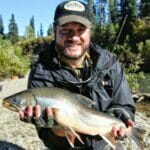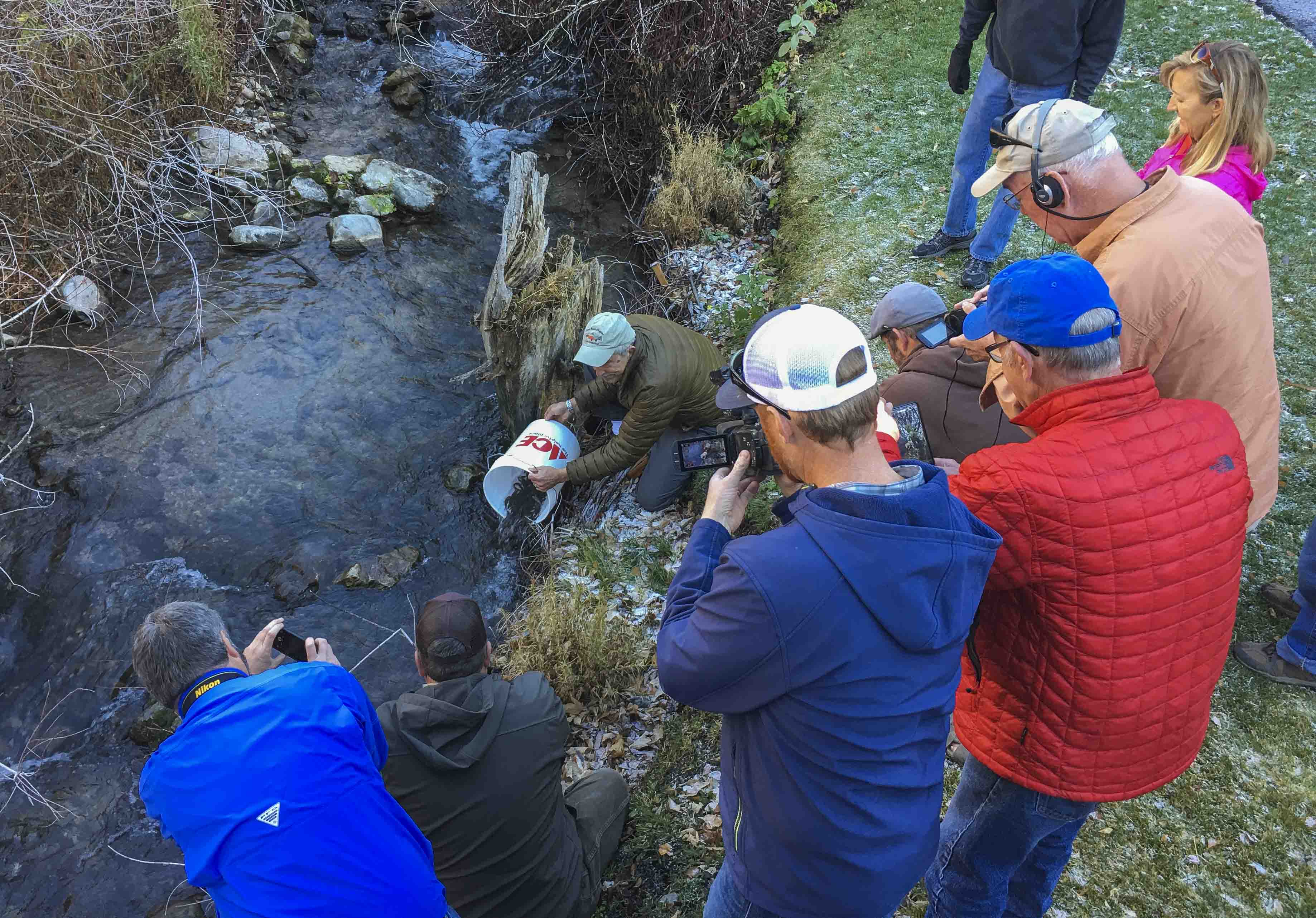Nearly 9,000 native Bonneville cutthroat trout, the state fish, were recently released in Mill Creek Canyon east of Salt Lake City. Mill Creek is now an entirely native fish system with Bonneville cutthroat, mountain suckers and longnosed dace all reintroduced after nonnative fish were removed. Brian Anderson photo.
By Brian Anderson
After a century absence, indigenous Bonneville cutthroat trout once again swim in Mill Creek in Salt Lake City. Removal of a small dam and restoration of the creek channel through the dam site was the consummation of a four-year collaborative project. The success of the ambitious project was recenty celebrated with the third, and final, stocking of native Bonneville cutthroat trout.Native Bonneville cutthroat stocking in Mill Creek Canyon, Salt Lake County, Utah Video of Native Bonneville cutthroat stocking in Mill Creek Canyon, Salt Lake County, Utah
Bonneville cutthroat trout are released in Mill Creek. Utah Division of Wildlife Resources video.
Utah Trout Unlimited collaborated with the Uinta-Wasatch-Cache National Forest, Utah Division of Wildlife Resources, PacifiCorp, private landowners, Boy Scouts of America and others on removal on non-native trout, culvert replacement, dam removal, stream restoration, and reintroduction of Bonneville cutthroat trout. TU’s Stonefly Society chapter used an Embrace-A-Stream grant and many volunteer hours to create a conservation model within a five-minute drive from Salt Lake Valley and its 1.5 million people.
In addition to providing funds for replacing culverts to allow fish passage, TU assisted in cleanup and disposal of non-native fish after rotenone treatments for three consecutive years. While fingerlings cutthroat were being stocked in November 2016, previously stocked cutthroat trout had grown to catchable size in the upper sections of the creek, where anglers have been catching the native cutts as part of the new Utah Cutthroat Slam, also a Trout Unlimited joint venture. Proceeds from the Utah Cutthroat Slam were used for the Mill Creek dam removal.
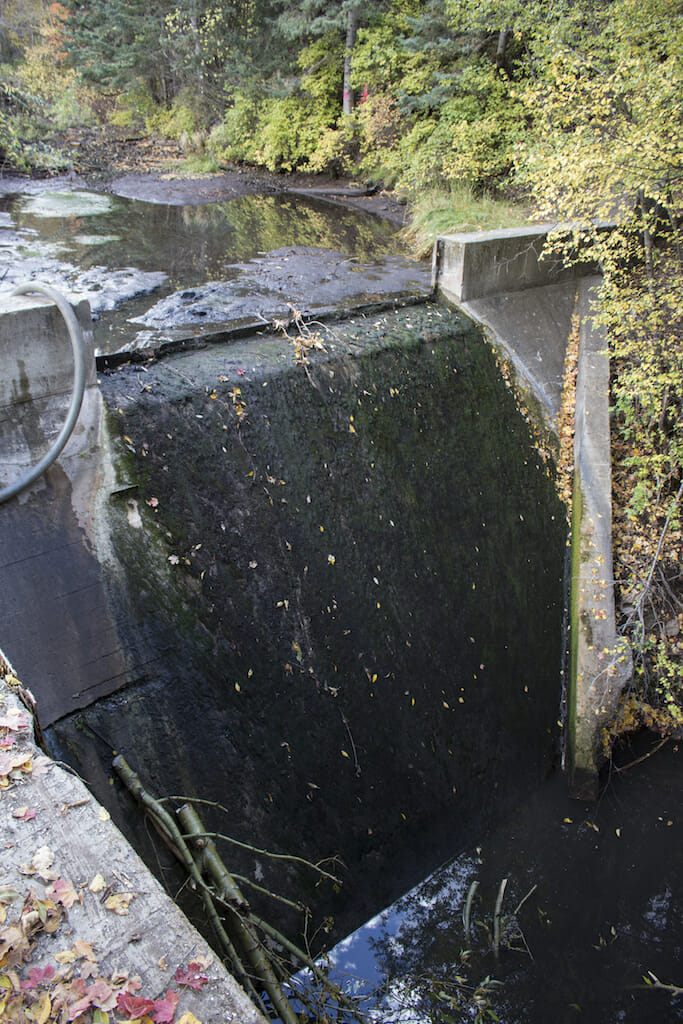
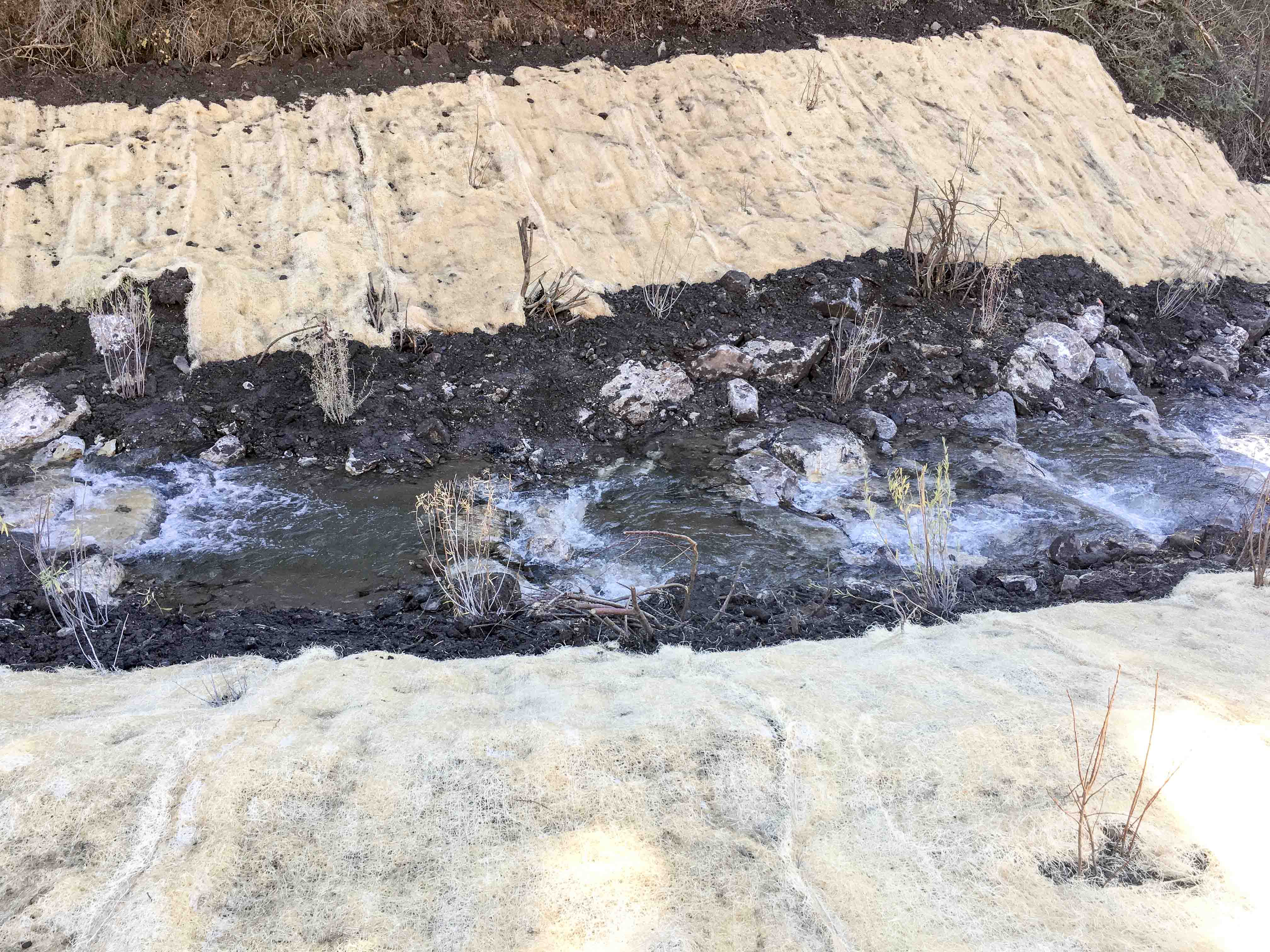
Mill Creek Canyon is a short, 9-mile canyon that enters the Salt Lake Valley near a shopping mall. The creek continues through Salt Lake City’s neighborhoods and parks. Because of its proximity to the city’s residents, Mill Creek Canyon is heavily used for hiking, biking, picnicking, and other recreation, including fishing. Because of its close proximity to a million people, treating and restoring Millcreek required a unique approach:
- The creek was treated in three sections in three consecutive years, so that in any given year, two-thirds of the creek would remain fishable and open to angling.
- It was important that the native trout introduction not diminish angling opportunities for this community fishery. The public may not have been as accepting of the project if it had limited their traditional angling of the creek. Consequently, general regulations still apply with a four-trout limit and bait is allowed.
- Rotenoned non-native trout were collected by Trout Unlimited’s Stonefly Society chapter. Because the creek flows into the valley through residential neighborhoods, project partners concluded that the carcass “pick up” would keep that part of the project less visible and less alarming to residents along the creek.IMG_9898.JPG
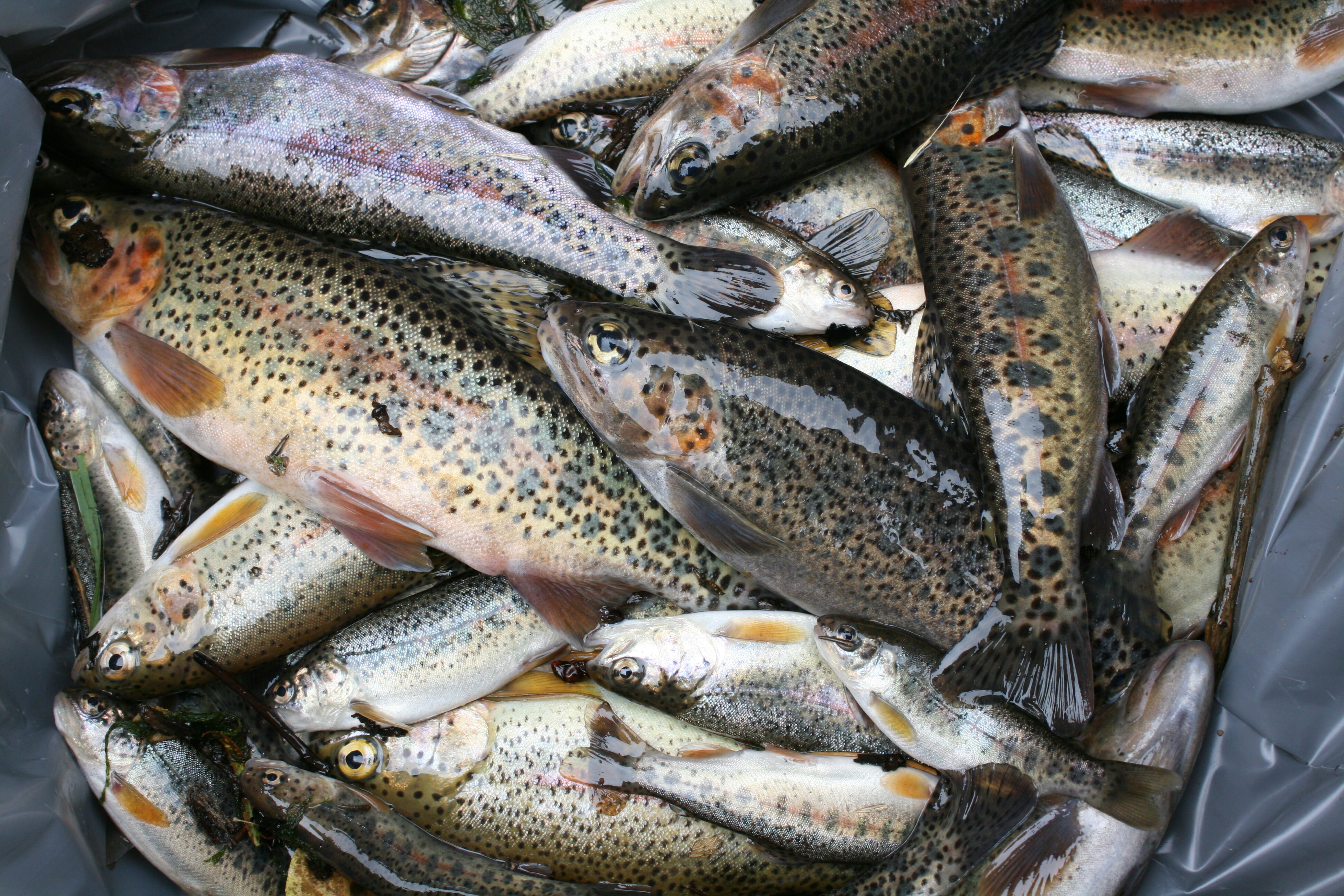
Nonnative fish were removed from Mill Creek to start the native reintroduction effort. Volunteers from the Stonefly Society TU chapter out of Salt Lake City helped collect the fish. Brian Anderson photo.
Although targeted for recovery, Bonneville cutthroat trout are not listed under the Endangered Species Act. Allowing for fishing and harvesting of the restored native cutthroat trout in Mill Creek is a critical component of the project so that the public can continue to fish in Mill Creek. Communities would be reluctant to support native trout re-introduction efforts if restoration meant the loss of fishing opportunities.
The Mill Creeks restoration is significant because native Bonneville cutthroat trout were extirpated nearly a century ago when non-native trout were planted in Mill Creek and the river was altered by construction of lumber mills. The indigenous trout are named for ice-age Lake Bonneville, which inundated the mouth of Mill Creek Canyon 15,000 years ago. In addition to native cutthroat reintroduction, native mountain suckers and long-nose dace were also reintroduced to the lower section of the creek.IMG_9829.jpg
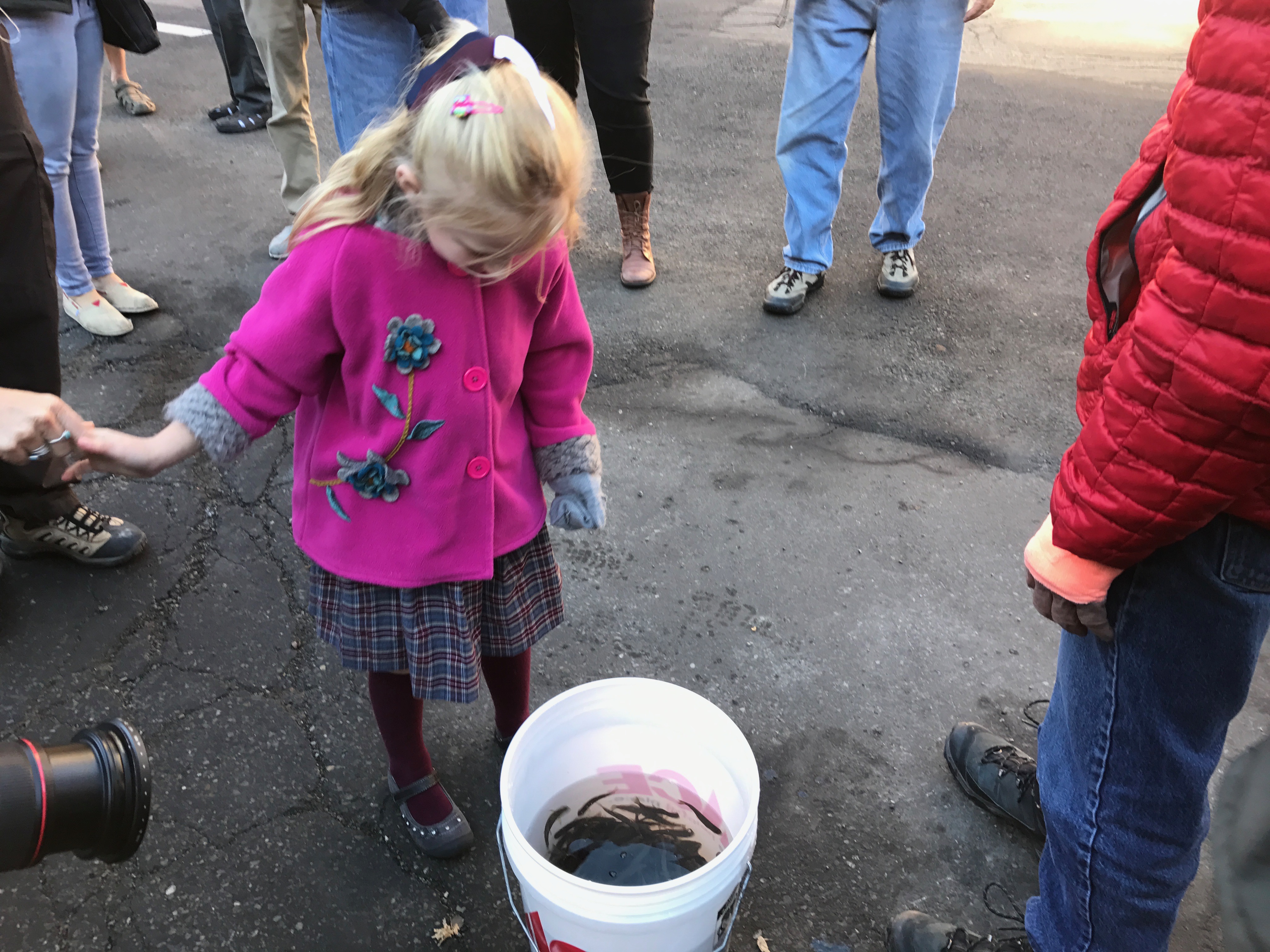
A young visitor takes a peek at fingerling Bonneville cutthroat trout before they were released into Mill Creek. Brett Prettyman photo.
Judging by the growth and health of the first year’s batch of 3,000 cutthroat trout, Mill Creek’s fishery will be as good as ever, but will be unique in providing Salt lake residents the opportunity to catch Bonneville cutthroat trout just outside their back door. The unique approach to Mill Creek is likely to become a restoration model for other parts of Utah as well as other states.
Brian Anderson is the vice chair of conservation for the Utah Council of Trout Unlimited.


